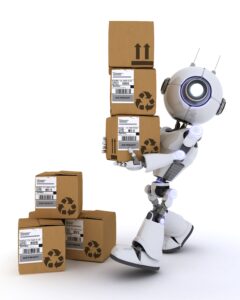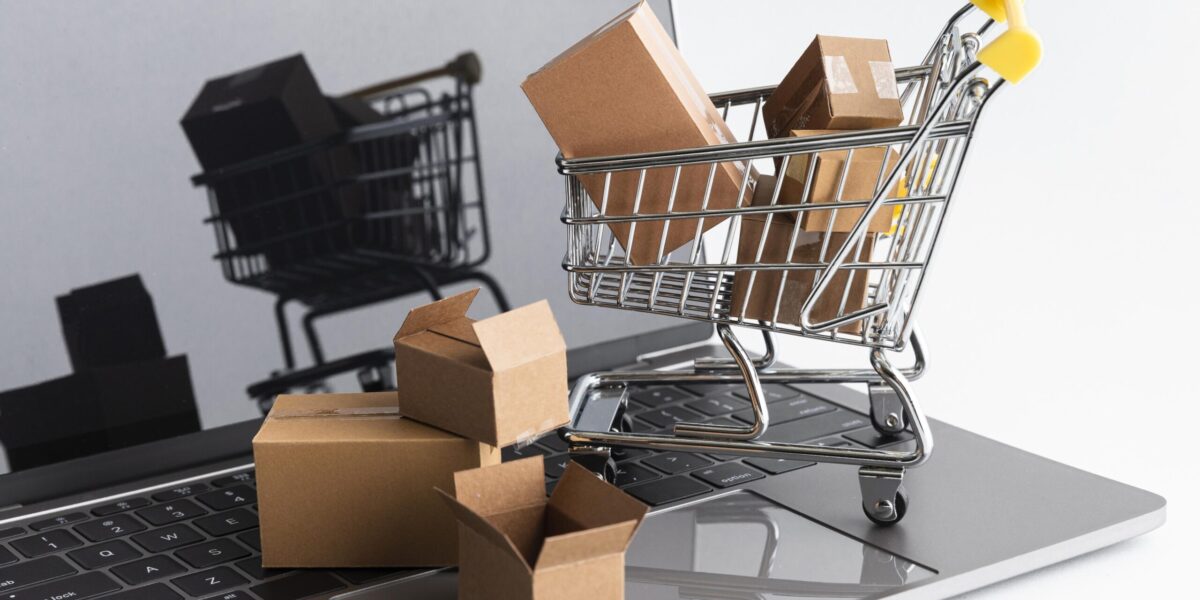Introduction
In our fast-paced world, delivery services have become an essential part of our daily lives. From groceries and clothing to electronics and even prescription medications, we rely on efficient and timely delivery to meet our needs. But what does the future of delivery look like? Enter Q-Commerce, the next big thing in the industry. Q-Commerce, short for Quick Commerce, is an innovative concept that aims to revolutionize the way goods are delivered. By exploring q-commerce trends, technology, and solutions, we can gain a better understanding of the future of delivery and how it is set to transform the way we shop and receive goods. Join us as we dive into the world of q-commerce and uncover the exciting advancements and possibilities it holds for the delivery industry.
The rise of Q-commerce and its impact on the delivery industry
The rise of Q-commerce has already made a significant impact on the delivery industry and is expected to continue to do so in the years to come. With its focus on speed, convenience, and efficiency, Q-commerce has quickly gained popularity among consumers. This innovative concept has introduced new delivery models, such as on-demand delivery and micro-fulfillment centers, that are reshaping the way goods are transported and received.
One of the key impacts of Q-commerce is the reduction in delivery time. Traditional delivery services often take several days to deliver goods, but Q-commerce aims to deliver products within hours or even minutes. This real-time delivery experience is especially valuable for time-sensitive items like groceries, medications, and perishable goods.
Additionally, Q-commerce has also brought about a shift in customer expectations. With the convenience of on-demand, same-day delivery becoming the norm, consumers now expect fast and reliable delivery options for all their purchases. This has prompted traditional retailers and e-commerce platforms to adapt their logistics operations to meet these evolving demands.
Not only does Q-commerce benefit consumers, but it also offers new opportunities for businesses. By investing in technology and infrastructure for quick and efficient delivery, companies can gain a competitive edge and attract a wider customer base. Q-commerce also opens up possibilities for small businesses and local retailers to reach a larger audience by offering fast and convenient delivery options.
In conclusion, the rise of Q-commerce is transforming the delivery industry as we know it. With its focus on speed, convenience, and efficiency, Q-commerce is revolutionizing the way goods are transported and received. As consumers continue to seek instant gratification and businesses strive to meet their demands, Q-commerce will play a crucial role in shaping the future of delivery. Stay tuned as we explore the various trends and advancements in Q-commerce and uncover its full potential in the next section.
 What is Q-commerce and how is it different from traditional e-commerce?
What is Q-commerce and how is it different from traditional e-commerce?
Q-commerce, short for “quick commerce,” is a new concept in the world of online retail and delivery. While traditional e-commerce involves customers placing orders online and receiving their purchases within a few days, Q-commerce takes speed and convenience to a whole new level. It aims to deliver goods within hours or even minutes, providing an almost instant gratification for consumers.
One of the key differences between Q-commerce and traditional e-commerce lies in the delivery model. Traditional e-commerce relies heavily on third-party logistics providers or postal services to deliver goods, which can often result in delays and longer waiting times. Q-commerce, on the other hand, is built on a network of micro-fulfillment centers strategically located near urban areas. These centers are designed to process and deliver orders quickly, reducing the delivery time significantly.
Another distinction is the customer experience. Q-commerce caters to the increasing demand for on-demand and same-day delivery, allowing customers to receive their orders when and where they want them. This level of convenience is unmatched by traditional e-commerce, which typically offers standard shipping options with longer delivery windows.
Furthermore, Q-commerce relies heavily on technological advancements and automation to streamline the entire delivery process. From automated order processing systems to robotic pickers in fulfillment centers, the use of technology enables faster and more efficient delivery.
In summary, Q-commerce is a game-changer in the world of online retail and delivery, offering unprecedented speed and convenience to consumers. Its ability to provide almost instant gratification and on-demand delivery sets it apart from traditional e-commerce. By leveraging technology and a network of micro-fulfillment centers, Q-commerce is redefining the future of delivery.
The benefits and challenges of Q-commerce for businesses and consumers
Q-commerce has the potential to revolutionize the retail and delivery industry, offering numerous benefits for both businesses and consumers. For businesses, the high-speed delivery model of Q-commerce can lead to increased customer satisfaction and loyalty. The ability to provide on-demand and same-day delivery can give businesses a competitive edge and attract more customers.
Additionally, Q-commerce can help businesses optimize their supply chain and inventory management. With strategically located micro-fulfillment centers, businesses can reduce delivery distances and transportation costs, leading to improved operational efficiency and profitability.
For consumers, the main benefit of Q-commerce is the unprecedented convenience it offers. Whether they need a last-minute gift or urgently require a product, Q-commerce allows consumers to experience near-instant gratification with delivery times measured in minutes or hours. This level of convenience aligns perfectly with today’s fast-paced lifestyle and the growing demand for instant solutions.
However, with the advantages come certain challenges. One of the key challenges for businesses is the need to invest in technology and infrastructure to support the Q-commerce model. From setting up efficient fulfillment centers to implementing advanced automation systems, businesses must be prepared to make substantial investments to compete in the Q-commerce space.
Another challenge is the increased pressure on logistics and delivery networks to meet the fast-paced demands of Q-commerce. The success of Q-commerce relies heavily on the ability to process and deliver orders quickly, which can strain logistics providers and lead to potential bottlenecks or delivery delays.
In conclusion, Q-commerce presents exciting opportunities for businesses and consumers alike. The high-speed delivery model can give businesses a competitive advantage and enhance the overall customer experience. However, businesses must be prepared to overcome the challenges associated with implementing Q-commerce, such as technological investments and the strain on logistics networks. As Q-commerce continues to evolve, it will be interesting to see how businesses adapt and leverage this innovative approach to meet the changing needs of consumers.
The future of delivery: What we can expect from Q-commerce
 The future of delivery is set to be transformed by Q-commerce, as the benefits and convenience it offers continue to capture the attention of businesses and consumers alike. With advancements in technology and infrastructure, we can expect Q-commerce to become even more efficient and widespread in the coming years.
The future of delivery is set to be transformed by Q-commerce, as the benefits and convenience it offers continue to capture the attention of businesses and consumers alike. With advancements in technology and infrastructure, we can expect Q-commerce to become even more efficient and widespread in the coming years.
One of the key developments we can expect to see is the expansion of micro-fulfillment centers. These compact warehouses strategically located in urban areas will enable faster and more cost-effective delivery. By bringing the products closer to the end consumer, businesses can reduce delivery distances and ensure timely order fulfillment.
Automation will also play a significant role in the future of Q-commerce. From robotic picking and packing systems to autonomous delivery vehicles, businesses will embrace innovative solutions to streamline their operations and improve efficiency. This will not only expedite the delivery process but also help reduce human errors and improve overall accuracy.
Additionally, we can anticipate the integration of emerging technologies like artificial intelligence and machine learning into the Q-commerce ecosystem. These technologies will enable businesses to optimize their inventory management, predict demand patterns, and personalize the customer experience. By leveraging data-driven insights, businesses can ensure they are delivering the right products to the right customers, further enhancing customer satisfaction and driving repeat business.
As the adoption of Q-commerce continues to grow, we can also expect to witness collaborations and partnerships between businesses and logistics providers to meet the increasing demands of this high-speed delivery model. By pooling resources and expertise, companies can establish a seamless and efficient delivery network, ensuring swift order processing and timely delivery to customers.
In conclusion, the future of delivery lies in the hands of Q-commerce. With advancements in technology and a growing demand for convenience, Q-commerce will shape the way businesses operate and consumers shop. By embracing innovation, optimizing logistics networks, and leveraging emerging technologies, businesses can stay ahead of the curve and meet the evolving needs of customers in this fast-paced world.
How businesses can adapt and thrive in the age of Q-commerce
As Q-commerce continues to revolutionize the delivery industry, businesses must adapt and innovate to thrive in this new age of convenience and efficiency. Here are some key strategies for businesses to consider in order to stay competitive in the Q-commerce era.
First and foremost, businesses need to invest in technology and infrastructure that can support Q-commerce operations. This includes implementing automated systems for order fulfillment, investing in advanced delivery vehicles, and optimizing inventory management with AI and machine learning. By leveraging technology, businesses can streamline their operations and meet the growing demands of customers in a timely and efficient manner.
Secondly, businesses should prioritize customer experience and personalization. With the integration of AI and machine learning, businesses can gather valuable data on customer preferences and shopping habits. By leveraging this data, businesses can tailor their product offerings and delivery options to meet individual customer needs, enhancing customer satisfaction and loyalty.
Collaboration and partnerships are also crucial in the Q-commerce era. By forming alliances with logistics providers, businesses can tap into their expertise and resources to build a robust delivery network. This collaboration will ensure smooth order processing, timely delivery, and efficient returns management. Additionally, partnerships with other businesses in the Q-commerce ecosystem can offer opportunities for joint marketing efforts and shared resources, further enhancing the overall customer experience.
Finally, businesses should continuously monitor and adapt to evolving technology and consumer trends. Q-commerce is a rapidly evolving field, and staying ahead of the curve is crucial. By keeping a finger on the pulse of industry developments and consumer expectations, businesses can make informed decisions and proactively adapt their strategies to remain relevant and competitive.
In conclusion, businesses must be proactive and forward-thinking to thrive in the age of Q-commerce. By investing in technology, prioritizing customer experience, embracing collaboration, and staying on top of industry trends, businesses can position themselves for success in this rapidly evolving delivery landscape. With Q-commerce shaping the future of delivery, now is the time for businesses to adapt and seize the opportunities that lie ahead.
 Is Q-commerce here to stay? Examining its potential longevity
Is Q-commerce here to stay? Examining its potential longevity
While Q-commerce has undoubtedly made a significant impact on the delivery industry, some may wonder if it is here to stay or merely a passing trend. Upon examination, it becomes evident that Q-commerce is not just a fleeting phenomenon but rather a significant shift in consumer behavior and expectations.
One key factor that indicates the longevity of Q-commerce is the growing demand for convenience and efficiency in our fast-paced modern society. As people lead increasingly busy lives, the need for quick and hassle-free shopping experiences becomes more prevalent. Q-commerce offers the convenience of fast deliveries, personalized recommendations, and streamlined processes that traditional commerce simply cannot match.
Furthermore, the advancements in technology that drive Q-commerce, such as AI, machine learning, and automation, continue to evolve and improve. This progression allows businesses to enhance their Q-commerce operations further, making them more efficient and cost-effective. As technology continues to advance, it is reasonable to expect that Q-commerce will only become more sophisticated and ingrained in our daily lives.
Another factor that supports the potential longevity of Q-commerce is the increased adoption and acceptance by businesses and consumers alike. As more businesses invest in Q-commerce infrastructure and more consumers experience the benefits firsthand, the demand for Q-commerce will continue to grow. This virtuous cycle will fuel the expansion and improvement of Q-commerce solutions, solidifying its place in the delivery landscape.
While it is impossible to predict the future with absolute certainty, the evidence suggests that Q-commerce is here to stay. The convenience, efficiency, and personalization it offers align with the modern consumer’s demands and lifestyle. As businesses continue to innovate and adapt to embrace this new era of delivery, it is clear that Q-commerce will shape the future of how we shop and receive our goods. Businesses must recognize this paradigm shift and position themselves accordingly to flourish in the Q-commerce era.
Conclusion: Embracing the opportunities of Q-commerce for a successful future
In conclusion, Q-commerce is not just a passing trend but a transformative force in the delivery industry. Its ability to cater to the growing demand for convenience and efficiency, coupled with advancements in technology, solidifies its place in the future of commerce. As businesses and consumers continue to embrace Q-commerce, its potential for growth and improvement becomes apparent.
To thrive in this changing landscape, businesses must recognize the opportunities presented by Q-commerce and adapt their strategies accordingly. By investing in Q-commerce infrastructure, businesses can meet the evolving demands of consumers and stay ahead of the competition. This includes optimizing logistics, leveraging AI and automation, and providing personalized experiences.
As consumers, embracing Q-commerce means enjoying the ease and convenience it provides. By leveraging the power of technology, we can streamline our shopping experiences, save time, and receive goods faster than ever before.
In essence, Q-commerce is not only the next big thing but the future of delivery. By embracing its potential, businesses and consumers can forge a path towards success in the ever-evolving world of commerce.





